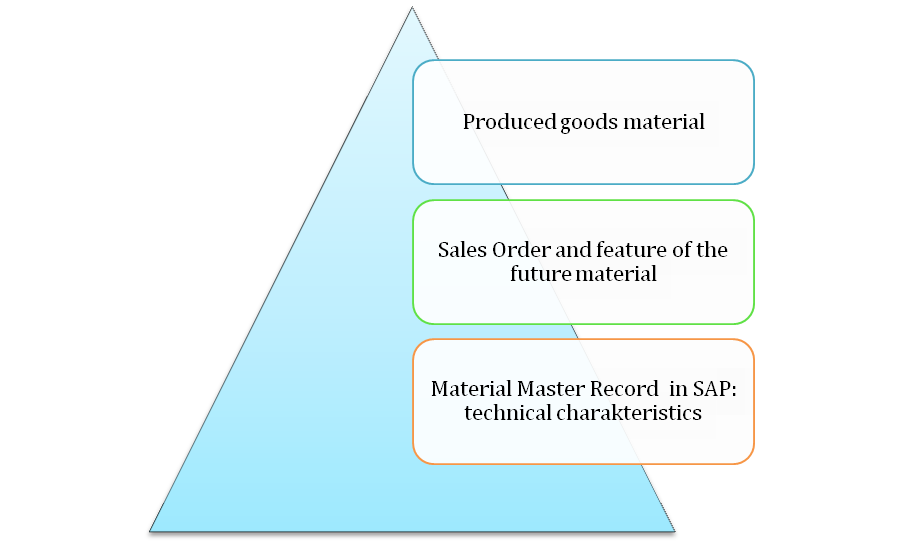Sustainability is increasingly relevant in today’s business landscape. Companies face growing pressure to maintain transparency in their data and operations. SAP offers comprehensive sustainability management solutions covering Environmental, Social, and Corporate Governance (ESG) data reporting, climate action, the circular economy, and social responsibility.
SAP provides the next climate action solutions intended to reduce the carbon footprint of a company’s entire value chain (scope 1 to 3) based on actual business transactions. These include:
- SAP Sustainability Footprint Management
- SAP Environment, Health, and Safety Management
- Climate action solutions.
In the context of growing environmental awareness and social responsibility, it is becoming increasingly important for companies to consider their carbon footprint. One way to minimize environmental impact is to optimize internal business processes.
Apart from these specialized solutions, companies can also utilize standard SAP S/4HANA modules for business process optimization. The focus here is not just on cost-efficiency but also on eco-consciousness. At the heart of this transition lies integration of Logistics and Sales and Distribution, particularly the Material Variant Configuration feature. This tool is part of the broader Enterprise Resource Planning (ERP) suite offered by SAP S/4HANA. It serves as a universal mechanism for customizing product offerings based on specific customer requirements. It not only aids in tailoring products but also in streamlining inventory, thereby reducing waste and energy consumption.
Unlike traditional ‘make-to-stock’ methods, where production volumes are predetermined based on sales forecasts and previous demand, the ‘make-to-order’ approach supported by Material Variant Configuration eliminates the need to hold large inventories of finished goods. This, in turn, reduces energy consumption in storage facilities and contributes to lowering the company’s carbon footprint. The feature is tightly integrated with the ‘Material Master Record,’ a centralized data repository capturing essential material details across various departments, including manufacturing and sales. This material master record is instrumental in shaping future product configurations and serves as a cornerstone for the company’s sustainability efforts.
Material Variant Configuration offers more than just product customization and inventory management. It provides opportunities for further customization by incorporating real-time environmental and seasonal data. This adaptability enables companies to make dynamic, eco-friendly decisions that are not only beneficial for the planet but also potentially profitable. Through a complex array of options and parameters, this feature can be customized to meet an organization’s unique needs, making it a valuable asset in the modern, eco-conscious business environment.
Calculating Carbon Footprint in Material Master Record
In the SAP S/4HANA system, the ‘Material Master Record’ serves as a centralized data repository, storing diverse attributes and characteristics of materials, such as their ID, description, units of measure, and other essential details. With the growing emphasis on sustainability and ecological responsibility, it is crucial to add the carbon footprint of each material to this record. Here are the initial assessment and information gathering methods that outline how to incorporate carbon footprint data into the Material Master Record:
- Supplier Data. Collaborate with suppliers to obtain precise data on carbon emissions generated during the production of each material used in the manufacturing of the final product. Specifically, this applies to materials that function as raw materials or semi-finished goods in the finished product. The carbon footprint data may be recorded in the Material Classification section in ‘Material Master Record’ of each material within the Materials Management module.
- Lifecycle Analysis. Conduct a thorough lifecycle analysis of each material to evaluate its environmental footprint during extraction, processing, usage, and disposal. The Production Planning module can create detailed product specifications, including the types of materials used, their characteristics, and energy consumption data. This information enables an initial estimate of the carbon footprint for each unit of product, thereby facilitating more accurate environmental impact planning across all production phases.
Beyond the Production Planning module, the Controlling module further refines the calculation of a product’s carbon footprint. It allows for the distribution of environmental costs—like energy consumption, waste management, and emissions—across individual products or product lines. These costs can be allocated based on various factors, such as the quantity of raw material consumed, machine operating hours, or emission volumes generated during production.
By merging data from both the Production Planning and Controlling modules, a fuller and more accurate assessment of each product’s carbon footprint can be achieved. This combined data enables real-time environmental impact monitoring and adjustments to manufacturing processes to minimize carbon emissions. Furthermore, the Controlling module can generate customized reports detailing the company’s carbon footprint. - External Databases. Leverage existing environmental impact databases to secure standardized carbon emission factors for commonly used materials.
Companies will soon be able to use Green Token by SAP S/4 HANA for tracking raw materials, a feature already in use by some customers. This will enable automated data exchange concerning the carbon footprint of each material. However, companies can already start evaluating their environmental impact using current tools.
Material Variant Configuration in SAP S/4HANA
The key components of the Material Variant Configuration architecture within the SAP S/4HANA module are illustrated in Picture 1.

Picture 1. Material Variant Configuration in SAP S/4HANA
The Sales and Distribution module in SAP S/4HANA seamlessly integrates Material Variant Configuration, including the handling of Sales Orders, which are formal requests from customers for specific products. This tool is part of SAP S/4HANA and other Enterprise Resource Planning (ERP) systems like SAP S/4HANA that allows for the configuration of complex products based on customer requirements. This tool allows for the definition of various product options and components, along with their compatibility conditions and interdependencies.
In an ERP system, a specialized material variant configuration allows for the creation of custom-made product variants based on predefined parameters and conditions. Central to this process is the ‘Material Master Record’, a unified data repository capturing vital material details across departments like manufacturing and sales. This record forms the cornerstone for future product configurations. Each ‘Material Master Record’ possesses distinct characteristics that define the properties and parameters of both the components involved and the resultant product.
When a customer places an order for a custom-made product, the variant configuration automatically considers the characteristics specified by the customer. It subsequently selects the suitable materials or components needed to produce the custom-made product. Based on the material variant configuration data, a production order is formulated using the initial sales order details. This production order inherits the product’s characteristics and the features requested by the customer. For example, if a customer orders special heat-resistant threads, the system would select 100% staple meta-aramid fiber as the base material, instead of synthetic fibers. The characteristics of the final product would then be derived from the Material Master Record of the staple meta-aramid fiber.
Variant of calculation Carbon Footprint of the finished goods
SAP offers a specialized module called ‘Sustainability Footprint Management’. For companies not yet ready to invest in this specialized solution, a customized approach using existing SAP modules can be considered, as outlined below:
The integration of carbon footprint data in different Material Management, Sales and Distribution, Production Planning, Logistics, Controlling and other modules offers a robust approach for tracking and reducing a product’s environmental impact. The Materials Management module captures the carbon footprint associated with raw materials, components, and semi-finished materials. This data is essential for understanding the environmental impact at the initial stages of production.
On the other hand, the Controlling module can account for emissions derived from energy consumption (natural gas, oil, biomass, electricity, fuel, paper, materials, etc.) during the production process. The formula may be the following:
E = A x EF x (1-ER/100)
E = emissions;
A = activity rate;
EF = emission factor;
ER = overall emission reduction efficiency, in a percentage.
The Controlling module can calculate the carbon emissions based on electricity usage. Companies can tailor this calculation method depending on their production location and the availability of renewable energy in that area. Open data on the percentage of renewable energy produced in the country can be incorporated to refine these calculations. For instance, if a production facility is located in a region where 40% of the energy comes from renewable sources, this percentage can be used to adjust the emission factor. The adjustment can lower the overall carbon footprint calculated, reflecting the cleaner energy used in production. This data needs to be updated periodically, ensuring that the emission calculations are always current and aligned with the latest renewable energy statistics.
Additionally, emissions can be automatically calculated from electricity bills (a company may find the special existing programs), providing an accurate and automated method for accounting for this aspect of the carbon footprint.
At the end of the month, the company can allocate data related to the carbon footprint generated by services provided and work performed to the products manufactured during that period. This is done according to the approved methodology for distributing indirect costs within the company. By doing so, the organization ensures that the carbon footprint data is accurately attributed to individual products, enhancing the reliability of sustainability reports and facilitating better strategic decisions for reducing overall emissions.
The integration of Material Variant Configuration in Sales Orders with these carbon footprint tracking features offers a holistic approach to not only meeting customer demands but also achieving corporate sustainability goals.
Additional benefits of using the Material Variant Configuration
There are some additional benefits of using the material variant configuration for an enterprise:
Production optimization. Unlike traditional ‘make-to-stock’ methods, where products are pre-manufactured, ‘make-to-order’ production commences only upon receipt of a customer order. Greater scope for product customization allows businesses to cater to niche markets, potentially commanding higher margins. Additionally, the production is tailored to meet the precise requirements of the clients, ensuring that the resulting products meet their long-term durability and quality expectations. Optimizing inventory levels and production schedules can reduce the need for frequent and long-term transportation, thereby decreasing carbon emissions from vehicles.
Inventory cost reduction. The make-to-order approach eliminates the holding costs of finished goods, freeing up capital otherwise tied up in stock. The material variant configuration allows businesses to meet customer needs precisely while reducing the necessity to maintain large inventory levels. This approach not only streamlines logistical costs but also lowers energy consumption in storage facilities, thereby reducing carbon emissions. Lower storage space requirements also result in savings on service costs associated with warehouse maintenance
Efficient resource utilization. Because production is initiated by customer orders, resources can be allocated more efficiently, thereby reducing waste. This means not just resource savings but also a reduction in emissions related to waste disposal. The precise configuration of products also enables the optimized procurement of raw materials and semi-finished goods. Each new customer order clearly indicates the specific components required for product manufacturing. Scheduling production based on pre-configured products allows the company to forecast its long-term raw material needs, further saving on inventory storage costs. Accurate product specifications may lead to more precise forecasting of material needs, which can also reduce excessive resource usage.
Seasonal factors consideration for production optimization. In the default setup of SAP S/4HANA, there is no specialized feature that directly assimilates meteorological data. However, the system can be customized to integrate with external weather services to import relevant climate and seasonal data. This integration enables more accurate planning and adaptation of production processes based on real-time weather conditions and seasonal variations. The material variant configuration in sales orders supports the activation of custom-developed functional modules that can execute tailored logic. These modules can either use data already integrated into the SAP S/4HANA system or make real-time requests to external services, such as weather forecasting applications, to fetch current information. Looking forward, this imported meteorological data could be used for both fine-tuning production and optimizing logistical aspects, like route selection and transportation vehicle choice.
Packaging selection for finished products. Customers have the option to specify the type of packaging for material delivery when placing an order. Depending on the selected packaging, the system will perform a recalculation of the delivered product’s carbon footprint. The system can also log packaging as a separate inventory item, complete with a description of its characteristics. As a distinct inventory item, it can be quantitatively tracked and procured either from third parties or through in-house production, depending on the type of production.
Encouraging the selection of low carbon footprint products through pricing. The cost of the final product can be automatically calculated based on the selected options. Depending on the configuration of the ordered product, the system can flexibly set the base price. It can also apply additional discounts or surcharges based on the environmental impact of the selected characteristics. This approach to pricing can encourage customers to choose more eco-friendly choices.
Implementing this pricing strategy can have long-term benefits. As consumer behavior data is collected, the company can fine-tune the pricing algorithm to make it more effective. This data-driven approach can also provide insights into market trends, enabling the company to develop new, more sustainable products.
Preference for eco-friendly options of the production. The system can store information about the environmental characteristics of both the finished product and its components and accessories, the ERP system can automatically suggest or select eco-friendly materials or components, provided that this does not affect the product’s functional characteristics. This contributes directly to a reduction in production’s carbon footprint.
Promoting environmental responsibility through technology. The variant configuration can be further customized or integrated with other systems to monitor and account for environmental indicators throughout the product’s lifecycle. This can include tracking emissions during transportation, production, and even the disposal of the product.
Reduction of returns and errors. Enhanced order accuracy can lead to fewer returns and, consequently, lower reprocessing and transportation costs.
Conclusion
While not initially designed for environmental management, the Material Variant Configuration in SAP S/4HANA significantly enhances both production and logistics. This optimization has the added benefit of potentially reducing a company’s carbon footprint, which refers to the total amount of greenhouse gases, especially carbon dioxide, emitted directly or indirectly by their activities. By integrating this feature with systems and counting for environmental indicators throughout a product’s lifecycle, companies can more systematically track and reduce their carbon emissions. This makes Material Variant Configuration in Sales Orders enhance business process efficiency and can be integrated into the company’s comprehensive environmental strategy.
The article is written by Albert Mukhamedshin. Albert Mukhametshin is a consultant and ABAP developer with over 13 years of experience in implementing and optimizing SAP solutions, particularly in the Sales & Distribution (SD), Material Management (MM), and Electronic Data Interchange (EDI) modules. His proficiency in the ABAP programming language is complemented by extensive experience working with enterprises across industries such as steel, mining, oil & gas, as well as timber processing and federal retail distribution. Albert’s deep expertise encompasses a broad range of SAP-related skills and a strong commitment to enhancing business processes through advanced technology solutions.
To achieve a comprehensive understanding of SAP configurations and best practices, Albert invites you to explore his website at https://erpflow.tech/. This platform offers an extensive selection of articles that delve into different SAP system facets, delivering insightful information and practical guidance. The content caters to both experienced SAP users and newcomers, aiming to bolster your knowledge and application of SAP functionalities within your organizational framework.
Moreover, for insights into the professional journey and credentials behind the expertise offered on the website, feel free to visit his LinkedIn profile at linkedin.com/in/albert-mukhamedshin. Here, you can connect with him and stay updated on the latest trends and developments in SAP solutions. Engaging with this professional network will provide you with opportunities to discuss challenges, share experiences, and explore new dimensions in the realm of enterprise resource planning and environmental sustainability.
















